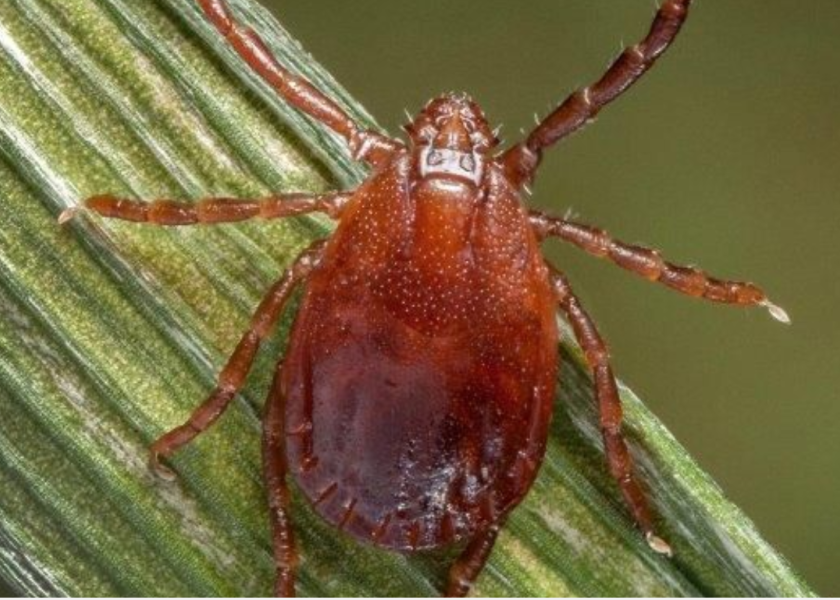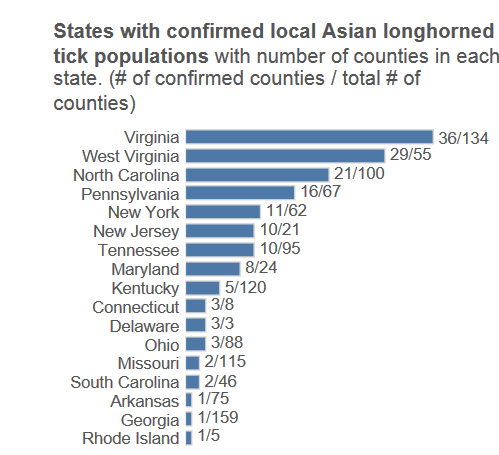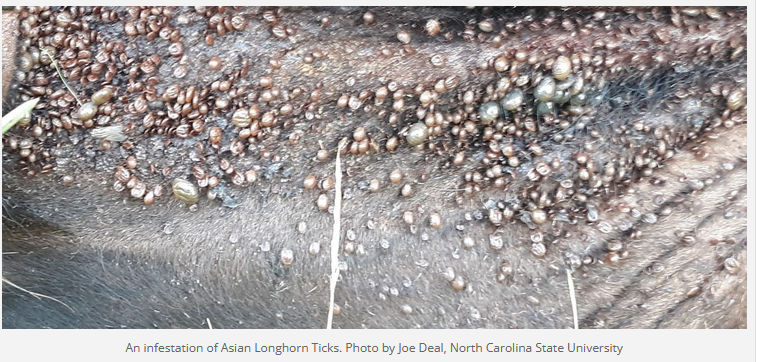Asian Longhorned Tick Arrives in 17 States, Calves are Especially Vulnerable

As the Asian longhorned tick (ALT) hitches rides with wildlife, including birds, and makes its way across the U.S., it’s taking the disease Theileria orientalis along with it and infecting cattle and other livestock – including horses, pigs, sheep, goats and chickens – in the process.


While there are 11 genotypes of T. orientalis, Dr. Kevin Lahmers, a veterinary pathologist at Virginia Tech, says the Ikeda genotype is the one causing clinical disease.
He says while T. orientalis doesn’t cause the expense in animal health and dollars that anaplasmosis currently does to the U.S. beef industry, about $300 million a year, it can cause poor thrift, abortions and even death.
The Ikeda strain of T. orientalis can lead to severe clinical signs and death of up to 5% of affected animals, according to research by Drs. Kelcey D. Dinkel and David R. Herndon, respectfully, Department of Veterinary Microbiology & Pathology, Washington State University. They reported their findings in a March 2021 article published in Parasites & Vectors.
Common symptoms of T. orientalis in cattle are similar to anaplasmosis and include fever, anemia, jaundice and lethargy, Lahmers reports. However, the majority of cattle that contract the disease appear to be asymptomatic or minimally affected.
“We know that because whenever we find clinical cases, we sometimes see that 75% to 100% of the herd is positive at the time of the first detection of a clinical animal,” he reports. “So, some herds can have it without anyone knowing it.”
Calves Are At Risk
Also, unlike with anaplasmosis, any aged bovine can be infected, and calves seem to be particularly vulnerable and at risk of contracting the disease. That’s something Lahmers wants veterinarians and producers to be mindful of as spring calving season gets underway and then again next fall.

“The Asian longhorned tick has some things about it that make it challenging to address,” Lahmers says.
One, it reproduces by parthenogenesis, meaning it doesn’t need a mate.
“All of the ticks that have been observed in the United States so far are female. Because it doesn’t have to find a mate to reproduce, it can spread faster,” he says.
A single female ALT can create a large population of ticks. It produces 1,000 to 2,000 eggs at one time, according to the USDA Animal and Plant Health Inspection Service (APHIS).
Also, because the ticks reproduce asexually, it appears there's a shortened life cycle rather than a year-long life cycle. “We can see multiple stages – the larva, nymph, and adult – all at the same time on the same animal,” Lahmers explains.
Any Animal Is Fair Game
While it likes to feed on cattle, the tick will feed on a lot of animal species, including dogs and cats.
And then there’s the issue of the sheer number of ticks that Lahmers and veterinarians sometimes see on an animal or in a pasture. The ticks can remain infected on a pasture for up to two years under favorable conditions
“It’s called hyperendemic. There can be hundreds of ticks on a person 30 to 60 seconds after they get off their ATV after they drive through a field,” Lahmers says. “You can find a density of 10 per blade of grass. That's just a little weird, in my opinion, to think about that number of ticks,” he adds.
There is no effective treatment other than supportive care for clinically ill animals. Tick control, pasture management, and maintaining a good plane of nutrition are important preventive measures that can be implemented, Lahmers says.
Currently a PCR test is available on blood (purple top tubes) or by submitting the spleen of necropsied animals to differentiate the disease from anaplasmosis. If veterinarians suspect the disease in their area, they are encouraged to let their state department of agriculture know.
Lahmers discussed the current situation with ALT during an American Association of Bovine Practitioners podcast interview with Dr. Fred Gingrich. The Have Your Herd podcast is available here: https://bit.ly/3BaoWvR
In addition, Virginia Cooperative Extension has produced a document titled “Managing the Asian Longhorned Tick: Checklist for Best Management Practices for Cattle Producers.” The document can be accessed at: https://www.pubs.ext.vt.edu/ENTO/ENTO-382/ENTO-382.html







